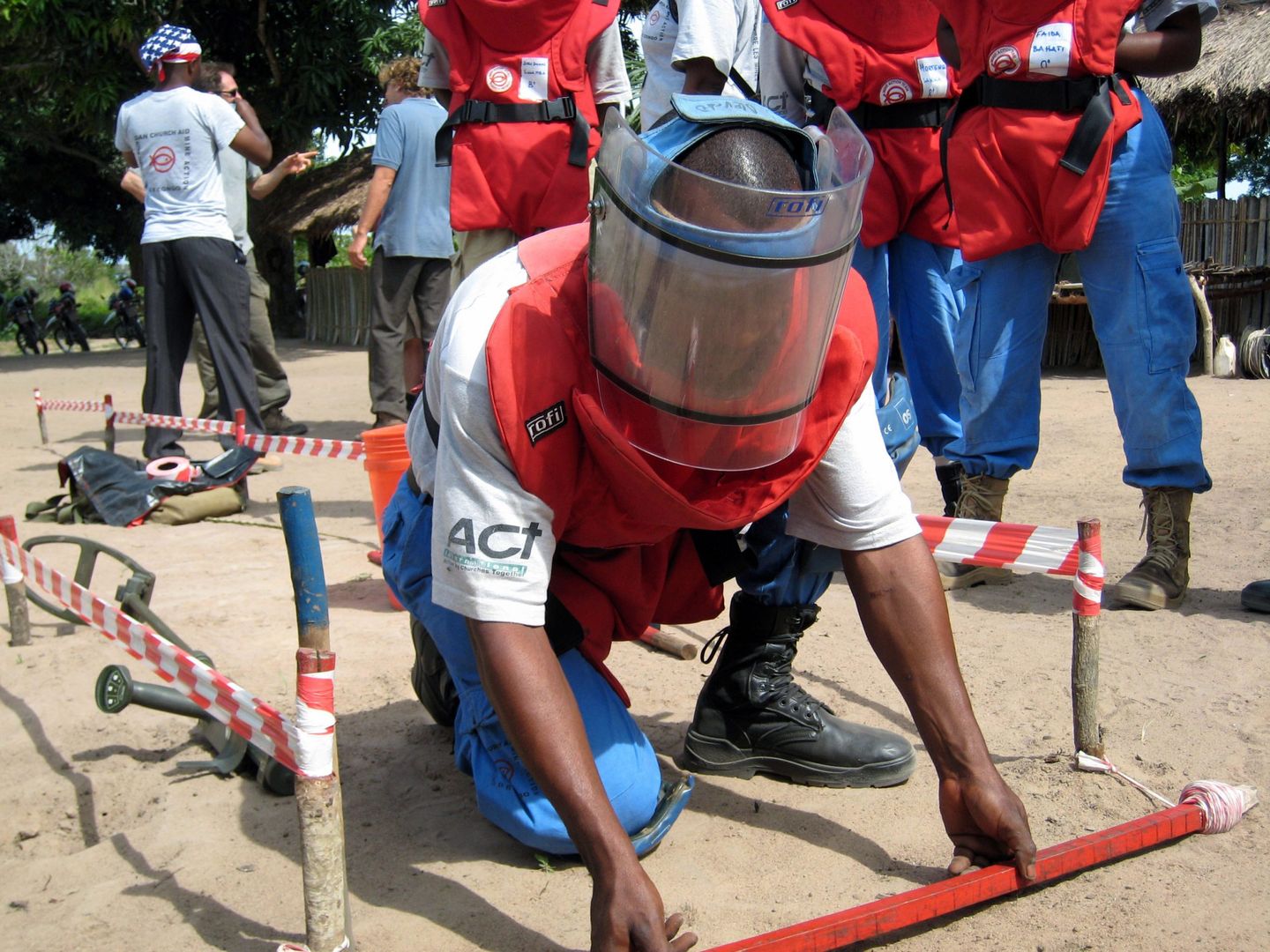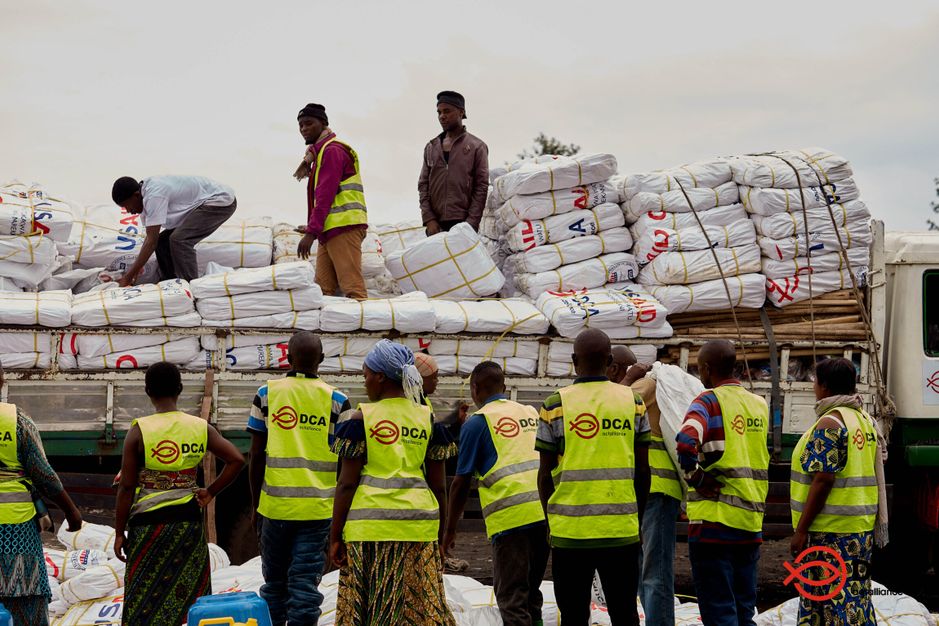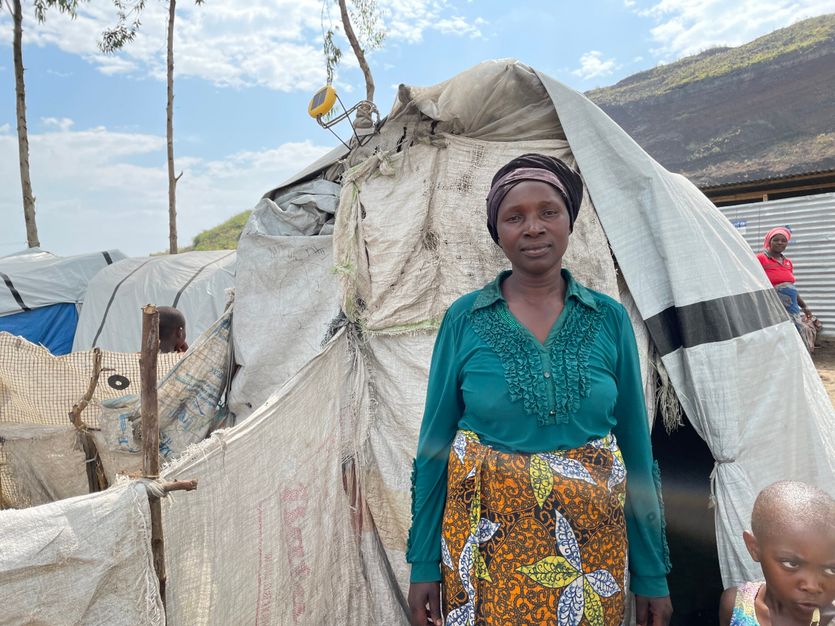The Congolese territory, approximatively four time the size of Texas, is as diverse as it is vast. Wide open plains give way to lush green mountain ranges before thickening into dense tropical rainforest. Rivers slither through the green woodslands like snakes through tall grass.
The density of this environment is a challenge to the development of the DR Congo, as territories are poorly interconnected, and the weak transport infrastructure isolates them.
The resource curse
DCA’s demining teams are active in Kasaï province, one of 21 Congolese provinces. Kasaï province is a verdant province in the heart of the country, bordering Angola to the South, but it is scarred by decades of conflict and war.
Kasaï suffers from the “resource curse” – or the paradox of plenty – which most communities in the province can testify to. Farmers and herdsmen have gradually abandoned their pastures, their fields and their farms and have instead gone into mining – in particular diamond mining. And most are not richer for it.
Various rebellions have affected the province have also led to massive population displacements and problems of food insecurity – among other issues. According to the UN’s Office for the Coordination of Humanitarian Affairs (OCHA), 326,000 people were in need of humanitarian assistance in May 2023.
Getting to Kasaï
From Goma in eastern DRC where DCA’s country office is located, demining teams travel by plane and car for four days to the small town of Ipoka, in the Dekesse territory in Kasaï Province.

Risking injury to eat
“In 2008, two young boys from the village of Mpoyi were hunting Gambia rats – a much-loved species in the region – when a mine exploded, taking the lives of the two teenagers,” reports village chief François Mpoyi and adds that the incident traumatised many people in the community.
Since then, most people have been staying away from the affected area. But not all. Some people still grow crops in the fertile soil or cut grass for building houses. To some members of the society the economic gains of entering the area outweigh the risk of injury – or even death.
Demining team works in close collaboration with communities
DCA has been working in the area since October 2023. The demining team is made up of around thirty people icluding deminers, drivers, a medical team, and a community liaison team.
In the first months the team placed markings to identify the contaminated areas and set up “safe” corridors in which villagers can travel in safety. The work is carried out in close collaboration with members of the village.
Local partner plays key role

All actions are explained to local communities – our national partner Actions pour le Développement Intégral par la Conservation Communautaire (ADIC) raises awareness of the dangers of anti-personnel mines and other unexploded ordnance.
Since 2016, ADIC has been an essential relay on the ground, reaching communities that are sometimes very remote.
Local communities look forward to reclaiming their land and putting it to use. Papa Kapinga, the father of the young men who died, puts all his trust in DCA – he hopes that renewed access to the land will benefit the community when members can grow more crops which in turn will lead to a more dignified life, but says in a solemn tone: “We expect direct benefits so that we can return to a life of dignity.“
DCA demining with US support
The project ‘Reducing the risk posed by mines and ERW in DR Congo through Clearance and Risk Education’ is made possibly by generous funding by the US State Department’s Office for Political Military Affair’s Bureau for Weapons Removal and Abatement PMWRA.
Read more about the project here.
Through the project DCA and its Congolese partners save lives and alleviate human suffering caused by mines, Improvised Explosive Devices (IEDs), and Explosive Remnants of War (ERW).
The project will clear mines and other explosives across eight provinces of the DRC – in total, DCA will clear 66,048 m² of contaminated land, conduct 500 Explosive Ordnance Disposal (EODs) call outs, and provide 1,000 Risk Education (RE) sessions.
The project commenced in January 2022 and will run until December 2024.
The project is an important contribution to DR Congo’s commitments and overall efforts to become landmine free by 2025.




